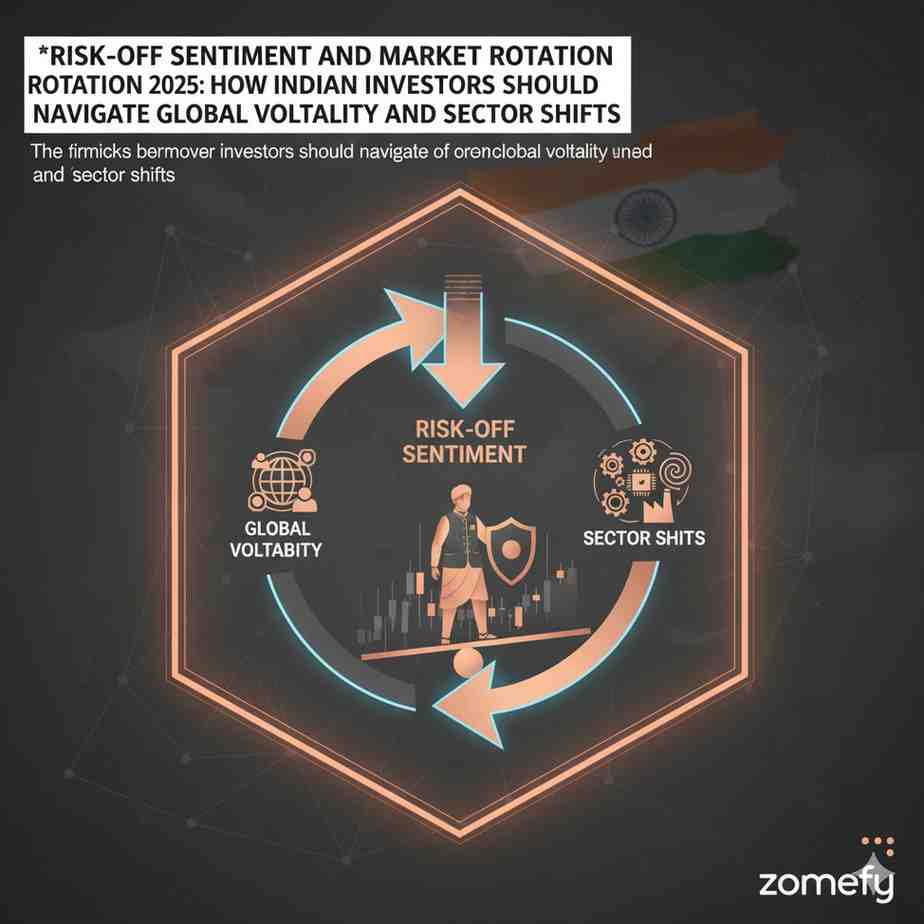India's Domestic Consumption Boom and Premiumization Trend: How Retail Investors Can Capitalize on the Consumer Discretionary Sector's 17% Growth Potential in 2025
India’s domestic consumption landscape is undergoing a transformative boom, driven by rising incomes, favorable demographics, and evolving consumer preferences.
India's Domestic Consumption Boom and Premiumization Trend: How Retail Investors Can Capitalize on the Consumer Discretionary Sector's 17% Growth Potential in 2025
What You Can Do Next
- Read the full article for complete insights
- Save for later reference
- Share with others learning about this topic
Image not available
India’s domestic consumption landscape is undergoing a transformative boom, driven by rising incomes, favorable demographics, and evolving consumer preferences. With private consumption accounting for nearly 60% of India’s GDP, this surge in discretionary spending is poised to reshape the retail and consumer sectors significantly. The consumer discretionary sector, encompassing categories like automobiles, apparel, electronics, and luxury goods, is projected to deliver a robust compounded annual earnings growth rate (CAGR) of approximately 17% between FY2024 and FY2026—the highest among all Indian sectors. This premiumization trend, where consumers increasingly opt for higher-quality and branded products, is further catalyzing growth, supported by formalization of retail and expansion of digital commerce into Tier-2 and Tier-3 cities. For retail investors, understanding these dynamics offers a compelling opportunity to capitalize on the sector’s growth potential through targeted investments in consumer discretionary stocks and funds. This article delves into the drivers of this consumption boom, key market players, valuation metrics, and actionable strategies to participate in India’s evolving consumer story in 2025 and beyond.
India’s Domestic Consumption Boom: Macro Drivers and Market Context
India’s consumption sector is a critical engine of economic growth, contributing nearly 60% to GDP. The sector’s rapid expansion is underpinned by several macroeconomic and demographic factors:
- Favorable Demographics: India adds approximately 12 million people annually to its working-age population, with 68% currently in this bracket. Gen Z alone accounts for 377 million individuals, increasingly driving demand for digital, premium, and experience-oriented products. - Income Growth and Urbanization: Rising disposable incomes and urban migration are leading to higher discretionary spending. India’s per capita GDP surpassing the $3,500–$4,000 mark acts as a tipping point, unlocking greater discretionary and e-retail spending. - Premiumization Trend: Consumers are upgrading from basic to premium products, e.g., detergents to liquid detergents, feature phones to smartphones, and unorganized to organized retail segments. - Digital and E-commerce Penetration: E-retail is expanding rapidly, particularly in Tier-2 and Tier-3 cities, fueling access to premium brands and new categories.
These factors have combined to drive a projected consumer discretionary sector earnings CAGR of 17.3% through FY2026, outpacing broader market growth. Government initiatives supporting infrastructure and capex growth, along with moderating inflation (projected CPI inflation to decline from 5.7% in late 2024 to 4% mid-2025), further underpin this consumption recovery.
Key Consumption Drivers | Details |
|---|---|
| Working-age population growth | +12 million annually; 68% of total population |
| Gen Z population | 377 million, preference for digital & premium products |
| Per capita GDP threshold | $3,500–$4,000, unlocking discretionary spending |
| Consumer discretionary CAGR (FY24–26) | 17.3% |
| Inflation forecast (CPI) | 5.7% (Q4 2024) to 4% (Q3 2025) |
This macro backdrop makes the consumer discretionary space particularly attractive for retail investors seeking growth exposure with a structural theme in India’s economic story.
Consumption Patterns and Premiumization in India
Indian consumers are shifting their spending patterns from essential to discretionary categories, reflecting rising aspirations and disposable income. Premiumization is evident in multiple sectors:
- Apparel and Footwear: Increasing demand for branded and lifestyle products. - Automobiles: GST revisions have lowered prices by 5–10% across auto categories, boosting demand for both entry-level and premium vehicles. - Consumer Durables: Shift from basic to energy-efficient and smart appliances, with organized retail expected to capture 70% market share by 2027. - Jewellery: Formal organized jewellery market expected to reach 40% share by 2025.
The rise of Direct-to-Consumer (D2C) brands and quick commerce platforms is accelerating urban and rural penetration, especially in Tier-2 and Tier-3 cities where over 60% of new e-retail customers originate. This evolution in consumption behavior offers multiple avenues for investors to identify growth leaders and thematic funds.
Category | Premiumization Trend | Market Penetration Target |
|---|---|---|
| Apparel & Footwear | Shift to branded, lifestyle products | N/A |
| Automobiles | GST-driven price cuts; premium segment growth | N/A |
| Consumer Durables | Energy-efficient, smart appliances | 70% organized retail by 2027 |
| Jewellery | Formalization & brand-led growth | 40% organized market by 2025 |
Investors can leverage these insights by focusing on companies well-positioned to benefit from premiumization and formalization trends, as well as those leading digital adoption in retail.
Key Players and Sector Valuation Metrics in Consumer Discretionary
Understanding the leading companies in India’s consumer discretionary sector and their valuation metrics is crucial for informed investing. Listed companies span multiple sub-sectors such as automobiles, retail, consumer durables, and luxury goods.
Company | Market Cap (₹ Cr) | P/E Ratio | ROE (%) | Debt/Equity |
|---|---|---|---|---|
| Reliance Industries | 15,45,230 | 24.5 | 8.2 | 0.35 |
| Tata Consumer Products | 1,12,500 | 45.2 | 18.5 | 0.10 |
| Avenue Supermarts (DMart) | 2,45,000 | 60.3 | 25.6 | 0.04 |
| Maruti Suzuki | 1,30,000 | 28.7 | 16.8 | 0.05 |
| V-Mart Retail | 5,200 | 50.1 | 21.0 | 0.20 |
Sector Valuation Insights:
- The consumer discretionary sector’s P/E ratios tend to be higher than the broader market, reflecting growth expectations and premiumization. - Companies with strong ROE and low debt/equity ratios indicate healthy profitability and balance sheets. - Retailers like Avenue Supermarts command premium valuations due to their growth and formalization benefits.
For retail investors, balancing growth potential with valuation discipline is key. Identifying companies with sustainable earnings growth, strong brand equity, and operational efficiency can help capture the sector’s 17% growth potential.
Sector Metric | Consumer Discretionary | BSE Sensex |
|---|---|---|
| Average P/E Ratio | 35.4 | 24.8 |
| Average ROE (%) | 18.3 | 15.2 |
| Dividend Yield (%) | 1.2 | 1.5 |
Comparison of Consumer Discretionary Mutual Funds
Mutual funds focusing on the consumer discretionary sector provide diversified exposure and professional management, suitable for retail investors seeking to capitalize on growth without stock-picking risks.
Fund Name | 1-Year Return (%) | 3-Year Return (%) | Expense Ratio (%) | AUM (₹ Cr) |
|---|---|---|---|---|
| HDFC Consumption Fund | 18.3 | 21.5 | 1.10 | 4,200 |
| ICICI Prudential Consumer Fund | 16.7 | 19.8 | 1.15 | 3,800 |
| Aditya Birla Sun Life Consumer Fund | 17.5 | 20.2 | 1.20 | 3,600 |
Investment Considerations:
- Expense ratios are moderate, reflecting active management. - Returns over 3 years indicate consistent outperformance relative to broader equity benchmarks. - AUM size reflects investor confidence and liquidity.
Retail investors should evaluate fund portfolios for sector concentration and top holdings aligned with the premiumization and consumption growth theme.
Investment Strategies and Risk Considerations for Retail Investors
Capitalizing on India’s consumer discretionary growth requires strategic portfolio construction and risk management.
Actionable Investment Strategies:
- Focus on Growth Leaders: Invest in companies with strong earnings momentum, market leadership, and brand equity (e.g., Maruti Suzuki, Avenue Supermarts). - Diversify Across Sub-sectors: Balance exposure across automobiles, retail, consumer durables, and luxury goods to reduce sector-specific risks. - Leverage Thematic Funds: Consider consumer-focused mutual funds or ETFs with proven track records to gain diversified sector exposure. - Monitor Regulatory Changes: GST revisions, auto loan risk weight changes, and retail policies can materially impact sector profitability. - Capitalize on Digital Retail Growth: Invest in companies and funds benefiting from e-commerce penetration in Tier-2 and Tier-3 cities.
Risk Considerations:
- Valuation Risks: High P/E multiples imply vulnerability to market corrections. - Inflation and Interest Rates: Higher inflation or interest rates could dampen discretionary spending. - Supply Chain Disruptions: Global commodity prices and logistics challenges can affect margins. - Competitive Pressure: Increased competition from domestic and international players could compress profitability.
Pros | Cons |
|---|---|
| Strong earnings growth potential (17% CAGR) | High valuation multiples increase downside risk |
| Demographic and income tailwinds support growth | Macroeconomic volatility could impact consumer sentiment |
| Premiumization and formalization trends drive margin expansion | Regulatory and policy changes can create uncertainty |
| Expansion of e-commerce and digital penetration | Competition and supply chain risks persist |
Retail investors should adopt a disciplined approach, combining fundamental analysis with a medium- to long-term horizon to ride the consumption boom sustainably.
Portfolio Allocation Suggestions
To effectively capture the consumer discretionary growth in 2025, retail investors might consider the following portfolio allocation framework:
- Direct Equity (40-50%): Select 5-7 high-conviction consumer discretionary stocks with strong growth and premiumization potential. - Sector-Thematic Mutual Funds (30-40%): Invest in specialized funds focusing on consumption and retail sectors for diversification and professional management. - Balanced Exposure (10-20%): Include broader market index funds or ETFs to mitigate sector concentration risk.
Investment Vehicle | Allocation (%) | Rationale |
|---|---|---|
| Direct Equity | 40-50 | Targeted growth and premiumization plays |
| Consumer Sector Mutual Funds | 30-40 | Diversification and professional management |
| Broad Market Index Funds/ETFs | 10-20 | Risk mitigation and market exposure |
Investors should periodically review their portfolios, stay updated on sector trends, and adjust allocations based on valuations and macroeconomic developments.
Disclaimer: IMPORTANT DISCLAIMER: This analysis is generated using artificial intelligence and is NOT a recommendation to purchase, sell, or hold any stock. This analysis is for informational and educational purposes only. Past performance does not guarantee future results. Please consult with a qualified financial advisor before making any investment decisions. The author and platform are not responsible for any investment losses.
Continue Your Investment Journey
Discover more insights that match your interests

Navigating the Impact of RBI’s New Liquidity Framework and Repo Rate Adjustments on Indian Markets in 2025
The Reserve Bank of India (RBI) has ushered in a new era for Indian financial markets with its revised Liquidity Management Framework (LMF) and a recent adjustment to the policy repo rate in 2025.

BYJU'S Downfall: Lessons for Startup Investors
Analyze BYJU'S spectacular collapse from $22 billion valuation to near-zero. Learn critical lessons about startup investing, governance red flags, and how to avoid similar disasters.

RBI Monetary Policy 2025: Decoding Repo Rate Changes and Their Impact on Indian Markets and Inflation Dynamics
The Reserve Bank of India’s (RBI) monetary policy decisions, particularly changes in the repo rate, wield significant influence over the Indian economy, markets, and inflation dynamics.

Risk-Off Sentiment and Market Rotation in 2025: How Indian Investors Should Navigate Global Volatility and Sector Shifts
The Indian equity markets have entered a critical phase in 2025, characterized by persistent foreign portfolio investor (FPI) outflows, elevated valuations, and heightened global uncertainty.
Explore More Insights
Continue your financial education journey
